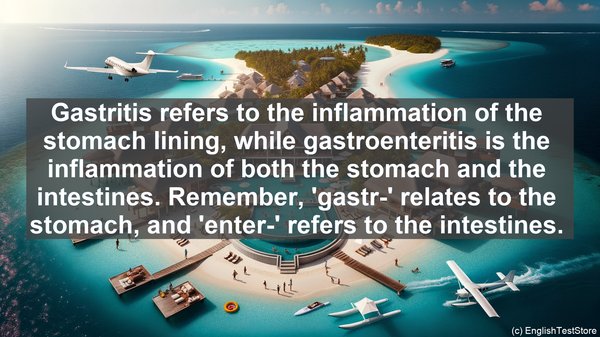Introduction
Welcome to our lesson on the top 10 commonly confused words in gastrointestinal sciences. As you dive deeper into this field, it’s crucial to have a strong grasp of these terms. Let’s get started!

1. Gastritis vs. Gastroenteritis
Gastritis refers to the inflammation of the stomach lining, while gastroenteritis is the inflammation of both the stomach and the intestines. Remember, ‘gastr-‘ relates to the stomach, and ‘enter-‘ refers to the intestines.
2. Dysphagia vs. Odynophagia
Dysphagia is the difficulty in swallowing, whereas odynophagia is the pain experienced while swallowing. If you encounter these terms, think of ‘dys-‘ as difficulty and ‘odyno-‘ as pain.
3. Hematochezia vs. Melena
Hematochezia refers to the passage of fresh blood in stool, often seen as bright red. On the other hand, melena is the passage of dark, tarry stool due to digested blood. Remember, ‘hema-‘ relates to blood, and ‘mel-‘ refers to dark.
4. Diverticulosis vs. Diverticulitis
Diverticulosis is the presence of small pouches in the colon wall, while diverticulitis is the inflammation or infection of these pouches. Think of ‘osis’ as a condition and ‘itis’ as inflammation or infection.
5. GERD vs. Peptic Ulcer Disease
GERD, or gastroesophageal reflux disease, occurs when stomach acid flows back into the esophagus, causing heartburn. Peptic ulcer disease, on the other hand, involves open sores in the stomach lining. Remember, ‘esophagus’ is related to GERD, and ‘ulcer’ refers to the sores.
6. Ascites vs. Edema
Ascites is the accumulation of fluid in the abdominal cavity, often seen in liver disease. Edema, on the other hand, is the swelling caused by fluid retention in the body’s tissues. Think of ‘ascites’ as fluid in the abdomen and ‘edema’ as fluid in the tissues.
7. Cholecystitis vs. Cholelithiasis
Cholecystitis is the inflammation of the gallbladder, often due to gallstones. Cholelithiasis, on the other hand, refers to the presence of gallstones in the gallbladder. Remember, ‘itis’ is inflammation, and ‘lith-‘ relates to stones.
8. Hepatitis A vs. Hepatitis B
Hepatitis A is a viral infection transmitted through contaminated food or water, while hepatitis B is a viral infection transmitted through blood or other body fluids. Think of ‘A’ as ‘ingested’ (food, water) and ‘B’ as ‘blood-borne.’
9. Ileum vs. Ilium
The ileum is the final part of the small intestine, while the ilium is a bone in the pelvis. Remember, ‘ileum’ is related to the digestive system, and ‘ilium’ is a bone.

10. Peristalsis vs. Segmentation
Peristalsis is the wave-like movement that propels food through the digestive tract. Segmentation, on the other hand, involves the mixing and breaking down of food. Think of ‘peristalsis’ as movement and ‘segmentation’ as mixing.
